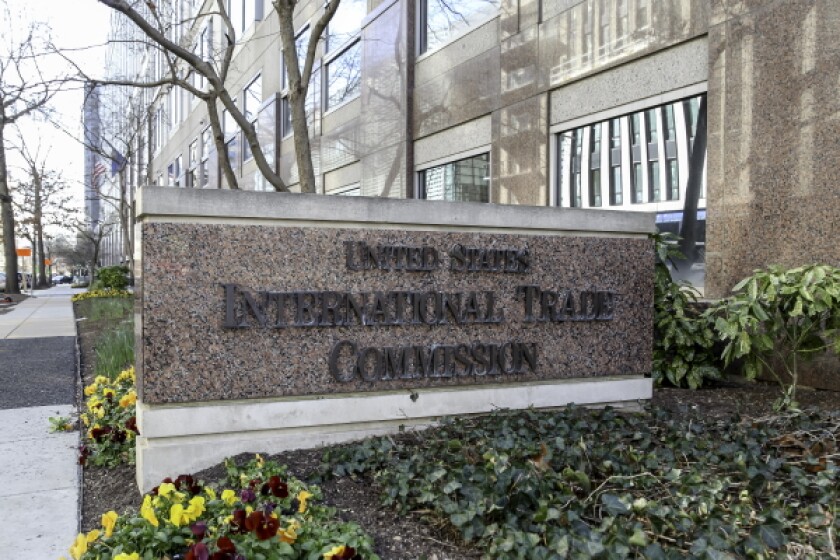The International Trade Commission (ITC) offers a unique pathway to protecting patents in the US, according to in-house and private practice counsel.
Sources from the ITC, Johnson & Johnson and a US-based law firm say that the organisation comes with a number of useful tools to help firms fight non-US-based companies suspected of patent infringement, including exclusion and cease and desist orders.
They add that perhaps the biggest advantage the ITC can offer them over the more traditional court-based litigation route for enforcement is speed.
Speaking at Managing IP’s US Patent Forum in April 2019, Calvin Nelson, counsel at Washington DC-based law firm Venable, pointed out that district litigation is often long and arduous by comparison.
“As an example, I have a case I filed back in 2012. Nearly six years later we are beginning the case. The ITC is pretty speedy, you can get a trial within nine months.”
For many companies that are facing imminent commercial threats from foreign businesses, the speed at which the ITC can issue remedies is a huge advantage over the district court route.
“The ITC is indeed a quick option and there is no set time frame; it may take 14 to 16 months from start to finish,” said Paul Coletti, associate patent counsel at Johnson & Johnson in New York. “A lot of it is upfront work where you would work with the US government attorneys to say we believe we have an infringement, and then the ITC judges decide quickly if there’s been an infringement.”
He pointed out that there is always the option to sue in any regular US district court when the circumstances call for it, but when faced with infringement by an importer, the business might be better served by obtaining an exclusion order with the ITC that prevents said infringer from importing its goods.
Unlike the district courts, the ITC jurisdiction encompasses all countries with any legally recognisable method of unfair competition in the US, which can include false advertising, breach of contract and IP cases.
Coletti said: “The ITC is important because it’s more about where you can stop things. You use the PTAB to attack someone’s patent in the hope of finding it invalid. With respect to the ITC, it is a little bit more of a discussion to offensively prevent an infringer from importing infringed goods.”
Domestic companies must be able to prove they have an industrial presence within the US to use the ITC, which can include licensing, R&D for engineering purposes or manufacturing. Once these hurdles have been met, the exclusion order becomes an easy and often attractive option.
“There is a convenience factor with the ITC,” said Nelson at Venable. “Even if you get an injunction order from the district court, those are often evaded by foreign firms.
“Blocking importation at the border is a very desirable outcome. General exclusion orders allow companies to block those products at the border, and the order is enforced by customs officers.”
Because the jurisdiction of the ITC includes all countries importing into the US, any general exclusion order protects domestic businesses not only against a specific company, but for any imported product that infringes IP.
“With the general exclusion order there is relief against the world. It not only covers the main product, but products that would have any IP infringement,” said Nelson
Cease and desist advantages
In addition to speed and breadth of jurisdiction, the ITC allows domestic companies to issue cease and desist (C&D) orders against foreign competitors who infringe their IP.
Coletti said that C&D orders are particularly useful tools to get foreign companies to respect patents. “We have tried C&D orders with the ITC in the past and they have been very effective, particularly when you have an intransigent defendant who won’t come to the negotiating table.”
He also noted that the threat of an exclusion or C&D order gives patent owners very powerful bargaining chips when monetary damages are off the table: “With respect to commercialising your products, the threat of not being able to sell your products is worse than damages. You don’t want to take damages off the table, but the idea that your product can’t be sold is very damaging.”
Penalties for domestic companies in breach of a C&D order can be very steep. The panellists noted fines begin at $100,000 per day and can mount up to millions of dollars very quickly.
A representative of the ITC chimed in to remind audience members that the scope of the ITC has widened in the last few years to include products imported into the US that are stored in Amazon warehouses. If foreign companies use Amazon warehouses to store their products it is considered sufficient enough presence within the US to fall under ITC jurisdiction.
Because an ITC case often happens in tandem with other cases, one final tip sources gave for working with the ITC was to buy a flow chart.
“This sounds so elementary but the single most useful thing I ever received in an ITC case was a flow chart. When you have litigation, and an internal parties review, and an ITC case all happening at the same time you are on three different tracks,” said Coletti.
Fortunately due to the speed at which the ITC moves, any flow chart used to track their cases won’t be very lengthy.











